Australia (Jan 18-29)
Bryce Craig
Hi everyone, Please enjoy Kaoru's latest travel report from his time in Australia and New Zealand! Leave a comment too!
-Patty
***************************************************************************
I left for Australia the day after I returned home from Barbados and arrived in Sydney to find Ian Cleworth and Riley Lee from TaikOz waiting at the airport. A few hours after landing, we went to the St. Luke's church where the Kinetic Jazz Festival takes place for a rehearsal with Kim Sanders. Kim and I exchanged pieces, me showing him some Japanese folk music and original music and him showing me a Romanian folk song. Riley, Kim and I did some trio improvisation and we called it a day. I took a walk in Newtown, a very hip neighborhood with plenty of coffee shops, bookstores, art galleries and clothing shops. The following day I went to the Museum of Contemporary Art by the Sydney Opera House and saw some some fantastic exhibitions of the works of Anish Kapoor, other international and local Australian artists and was pleasantly surprised to see Greg Ligon's video work with music by my friend Jason Moran. In the evening, I performed with the Tim Clarkson septet playing flute on one tune and fue on another. One of the greatest cultural treasures that the US has given the world is jazz and it was inspiring to see musicians of such high caliber playing in Sydney. The music was challenging rhythmically and harmonically but the musicians breezed right through it.
I traveled to New Zealand to see my friend Melanie Taylor who had just returned home after many years living in Sado working for Kodo. She will continue working for Kodo from abroad while going to graduate school in Melbourne (pronounced malbin as I was sternly corrected by Ozzie friends). Over the course of three days, we had lamb bar-b-que with her family, visited the Aukland zoo, One Tree Hill, the beach, and drove a couple hours to Waitomo to visit the glowworm caves - where I played the fue in the dark, the cavernous ceilings dotted with countless glowing specks. I was back in Australia Friday night in time for the Saturday morning TaikOz Intensive. About forty or so participants from all over Australia and Tazmania were present, taiko enthusiasts who traveled some great distances to share and learn as much as they could. For the next three days, there were workshops in all styles of taiko, fue and onikenbai given by myself and members of TaikOz. Since Ian and Riley started TaikOz in the 90's, the group has grown to a high caliber professional ensemble, with deep connections to many instructors and performers in Japan including Iwasaki Onikenbai, Hachijo, Miyake, Hayashi Eitetsu and Kodo. All the members are devoted students, all have extensive training in western percussion and drum set. Everybody in the group has diverse and interesting resumes: Ian was in the Sydney Symphony for over a decade, Anton is a dancer, martial arts expert and model, Riley is a highly acclaimed shakuhachi master, etc etc! Riley was also one of the earliest members of Ondekoza- Kodo's predecessors on Sado Island. When I lived in the Mano school house while a probationary member of Kodo, I saw a drawing of Riley on an old Ondekoza poster every time I went to my room at night. Riley is my sempai also in that he taught a semester at Princeton just before I did. Despite all these connections, we hadn't me until about a year ago, in Brooklyn, where he taught a VERY intense breathing workshop at KWTC.
As for the intensive, I was amazed to learn how much taiko was being played in what seemed to me a very remote part of the world. Living in NY even, it sometimes feels difficult enough getting information from Japan, but there are many dedicated taiko players in relatively large groups all over Australia, New Zealand, and the many islands in the area. I even heard there were multiple groups in Tasmania some with forty members.
I left the second night of the intensive early to perform at the Kinetic Jazz Festival with Kim, Riley and last minute addition of Timothy Constable, from Synergy Percussion. We performed folk, original and improvised music as solos, trios and a quartet. I felt the four of us really blended and connected in beautiful ways and the audience seemed to be with us along the journey. The sound was all acoustic and the church seemed a perfect setting for the music we created. Two sets later, I sat in with the Kinetic Jazz Festival Orchestra on a couple tunes, including one that was written for me by Ms. Gai Bryant. It was such an honor to perform a big band chart written for me- the first time that's ever happened!
The final evening of the intensive, I cut short my last workshop and ended it with a short, somewhat impromptu concert. First I had all the participants perform Ichirei, a piece I had been teaching over the course of a few days- I don't think I've ever had 30 some people playing that piece at one time and have definitely never had ten or so fue players playing it en masse. Following that, I performed with TaikOz- first an improvised Odaiko/noh kan duet, than a Steven Reich type mallet piece that Riley and I improvised over and finally my piece Together Alone which had members of TaikOz playing taiko with their hands. It was very free and conversational yet very tight and accurate in all the right ways.
My final day in Australia, I had lunch with all the members of TaikOz, then visited their studio in the evening and saw their amazing array of miyadaiko, shime, okedo, o-daiko, hirado, narimono and costumes- mostly all from Japan. Very impressive. I left the following morning. It was a great honor and a whole lot of fun hanging out with the members of TaikOz and all the intensive participants.
The day after I returned home, Mari and I set out for Antigua, this time for the wedding of our friends. In the end, I flew sixty hours over the course of three weeks. I return home with a surplus of e-mails to respond to, a few concerts coming up and a new semester at Wesleyan University. Oh and bags of dirty laundry to wash.
-Kaoru
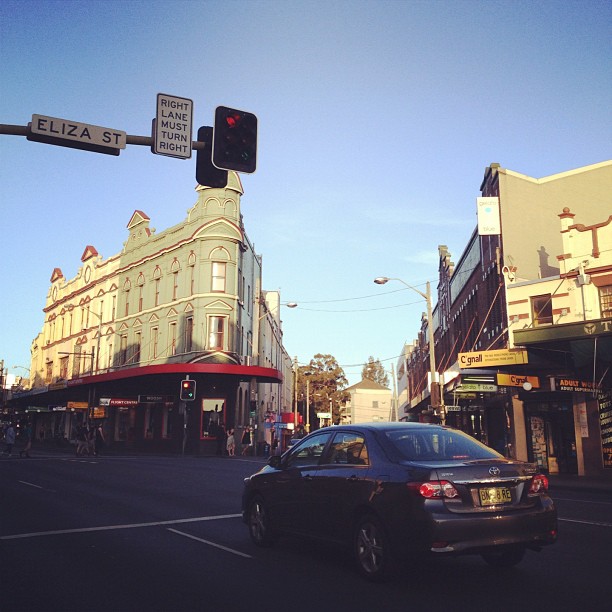
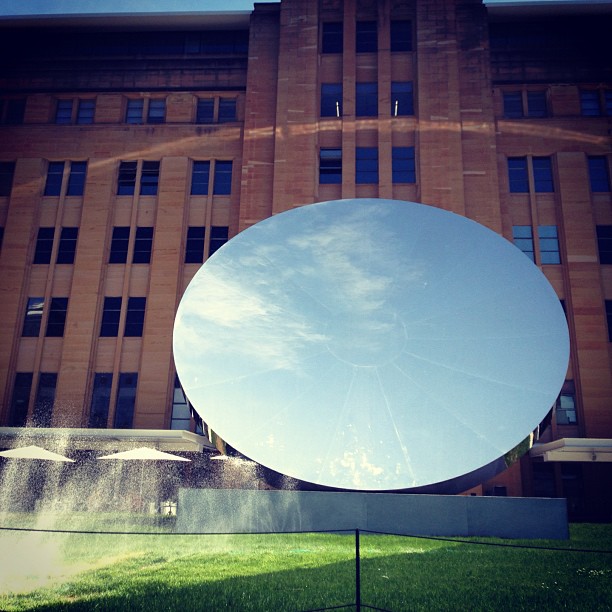
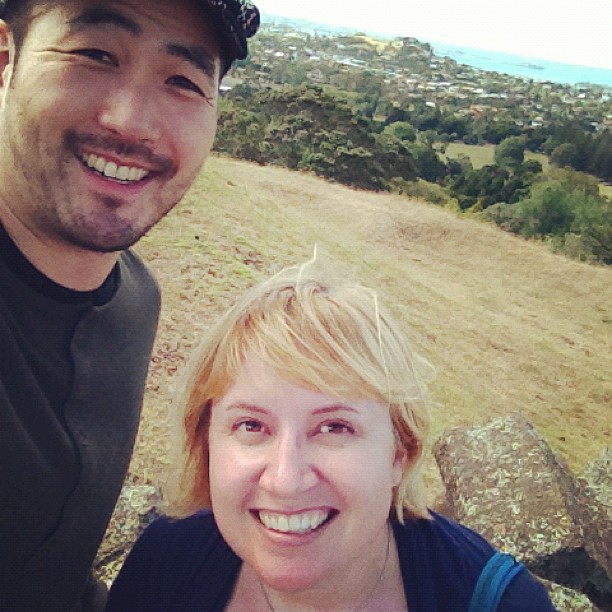
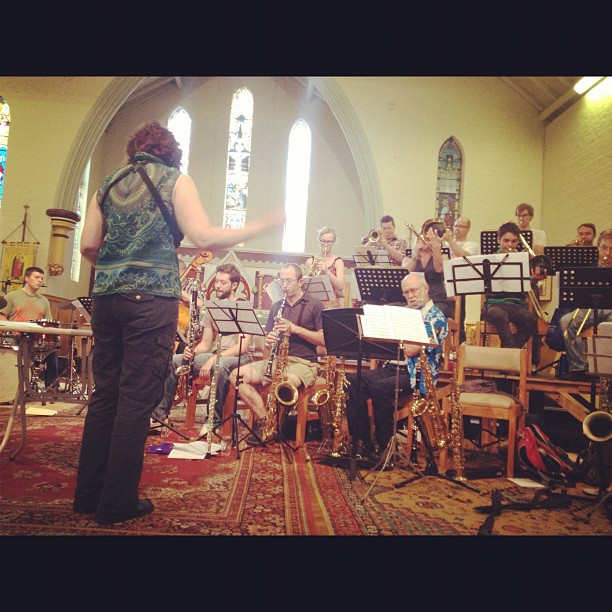
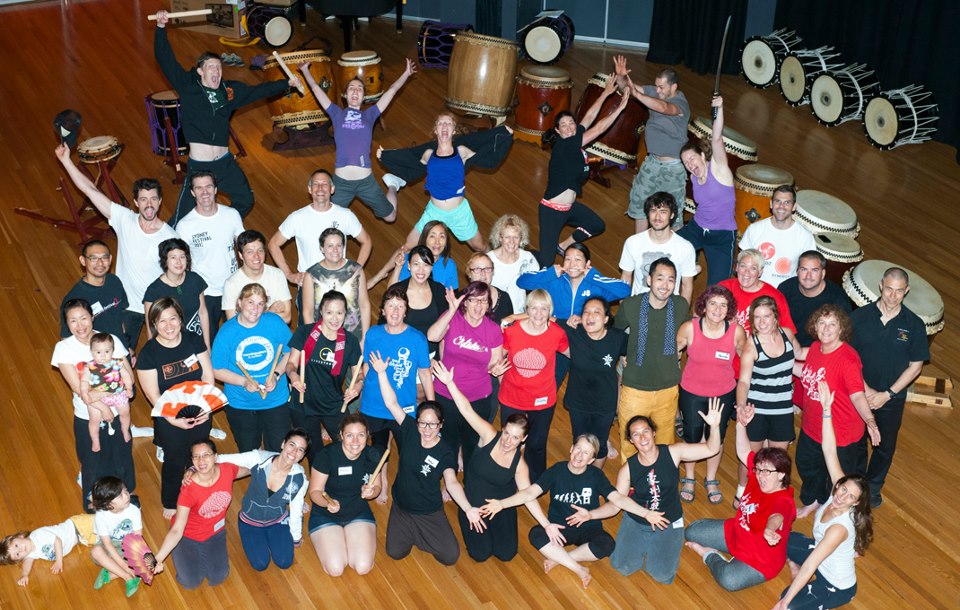
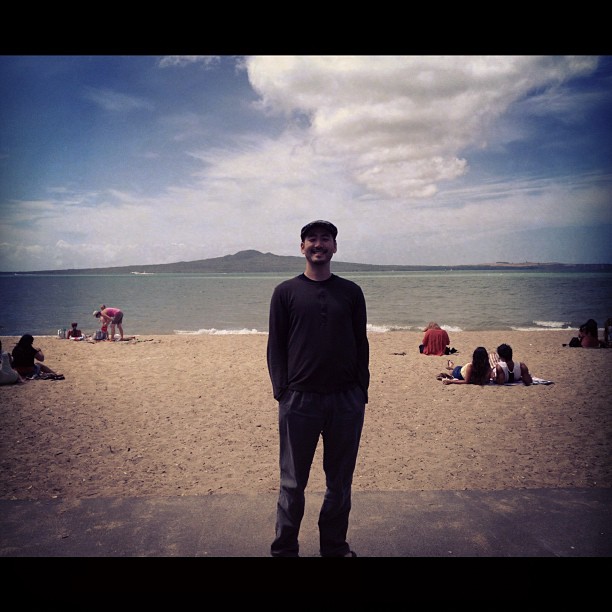
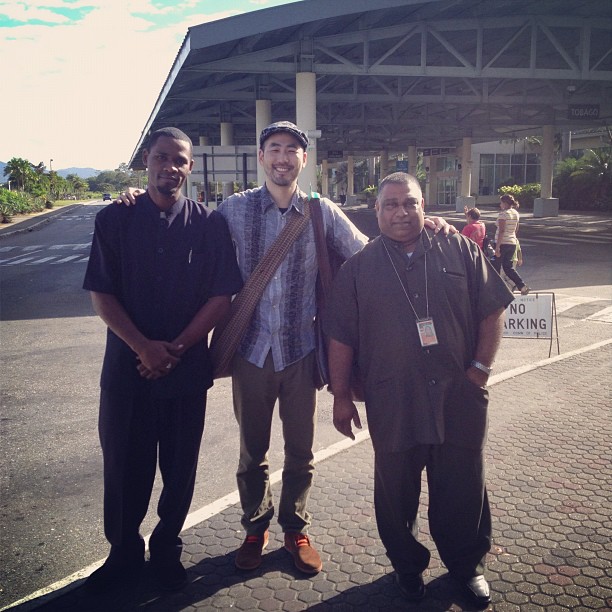
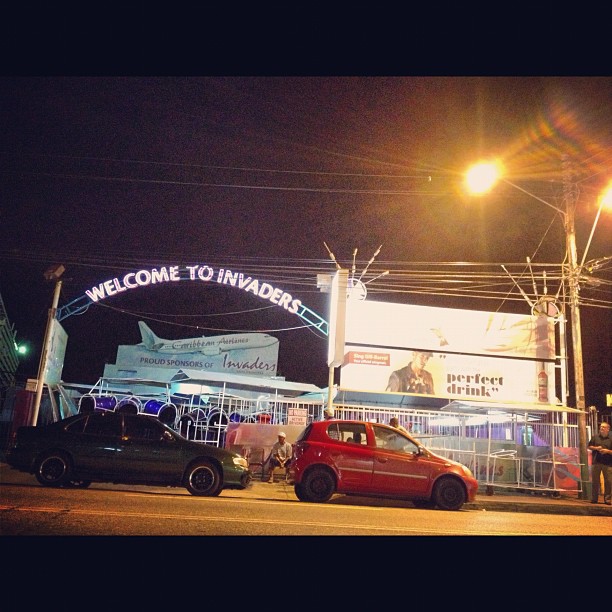
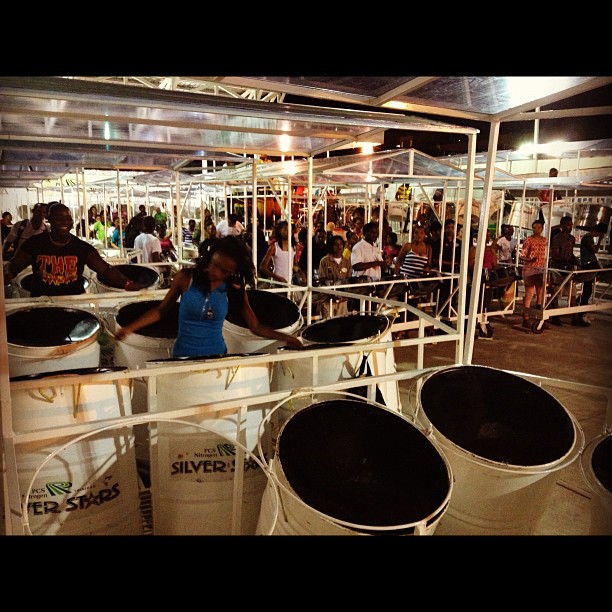
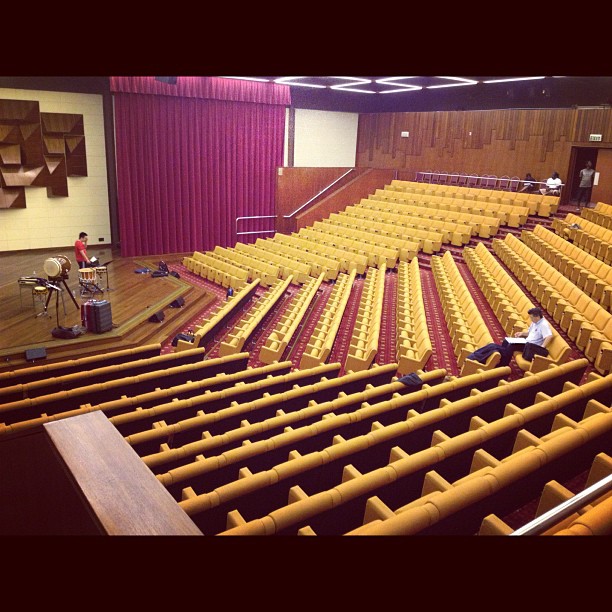
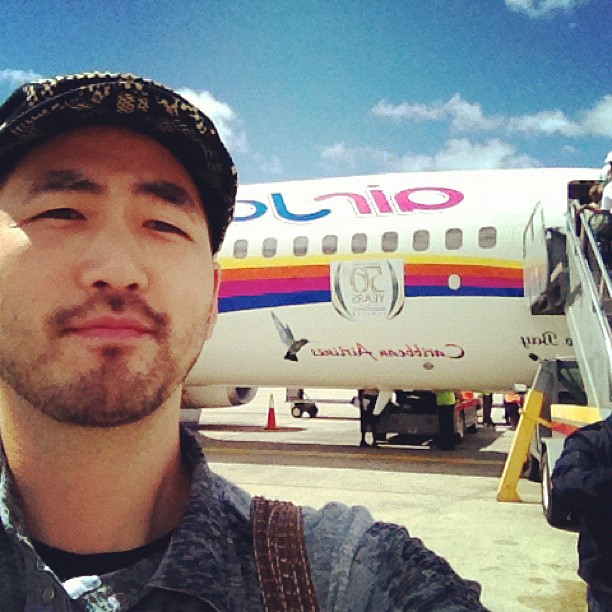
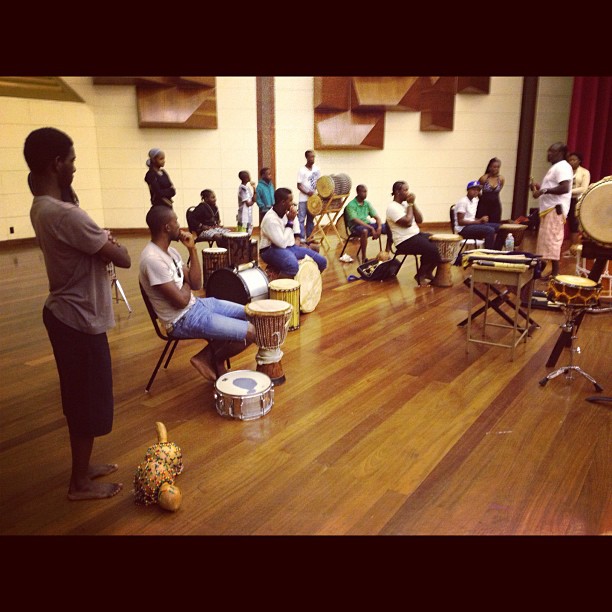
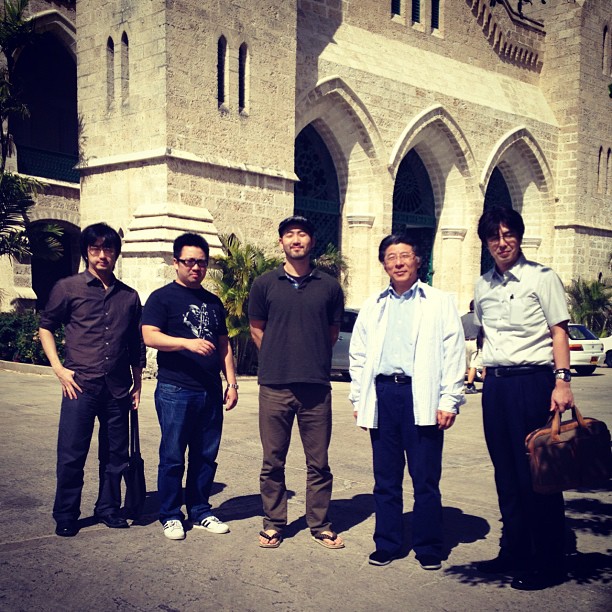
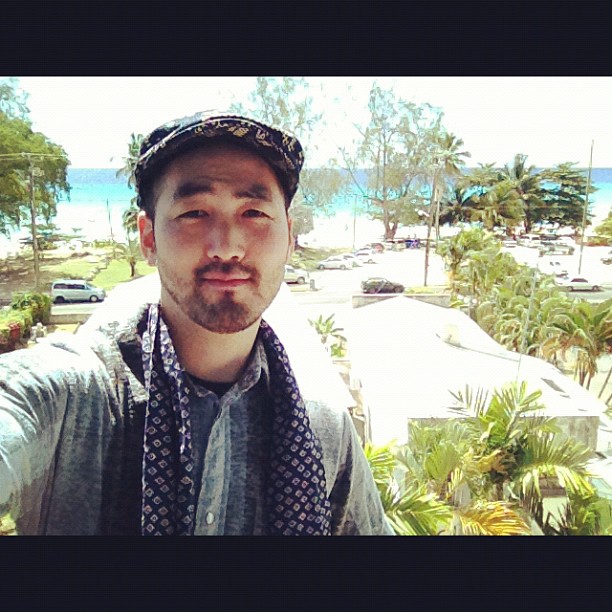
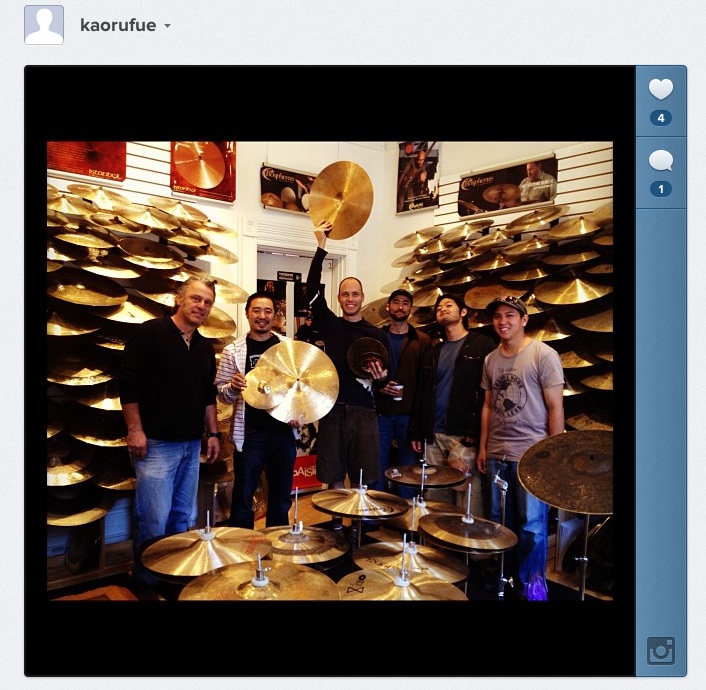


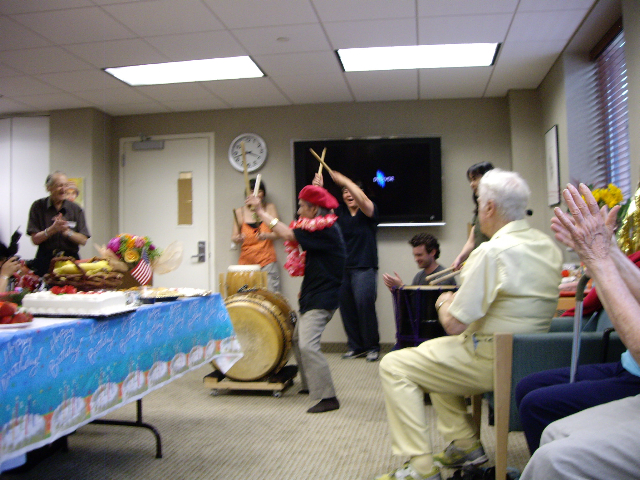

 Poutine, my new favorite food as long as I hold it to once every three or four years...
Poutine, my new favorite food as long as I hold it to once every three or four years...